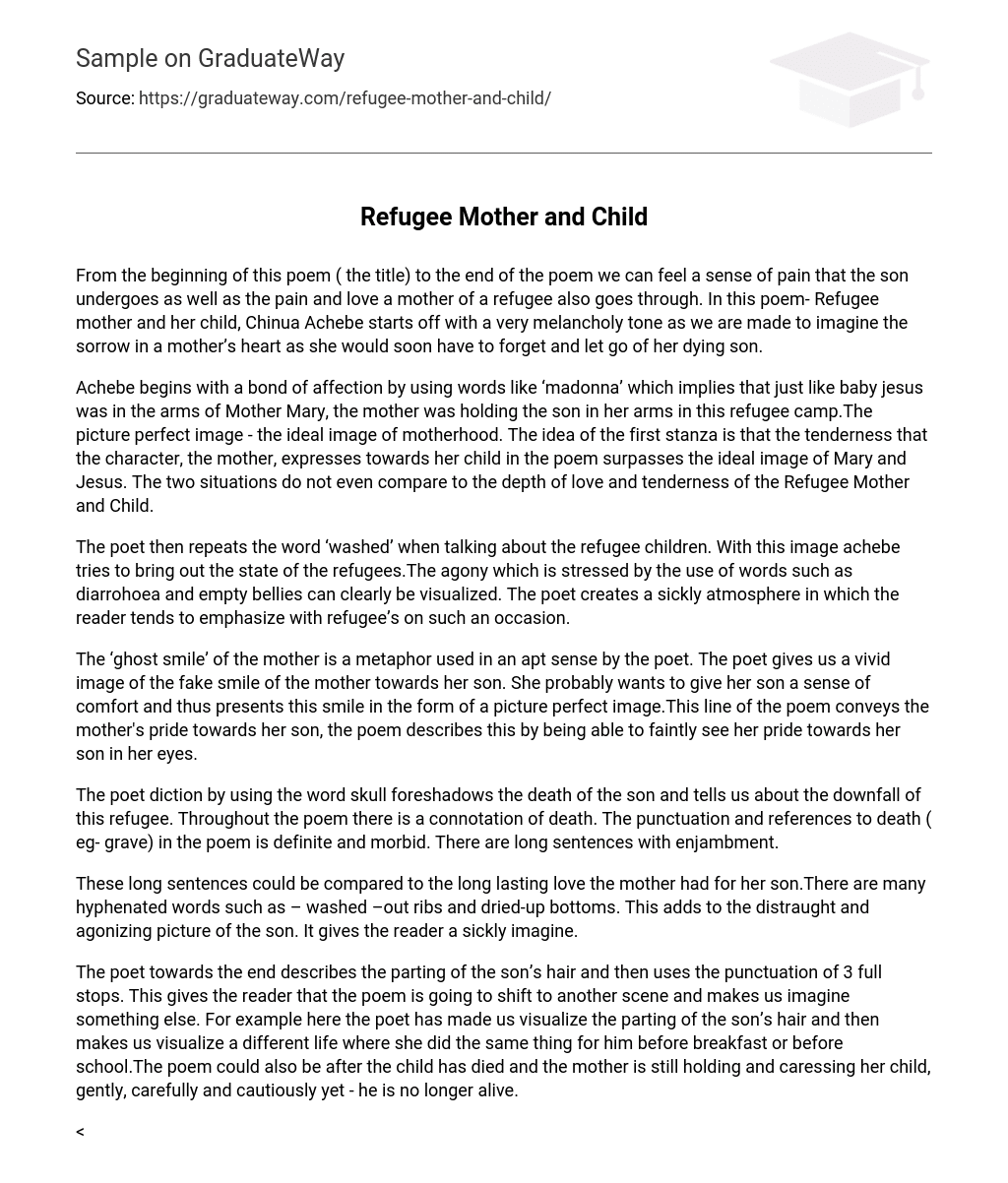Throughout Chinua Achebe’s poem, “Refugee mother and her child,” the title sets the tone for the underlying theme of pain experienced by both the son and the mother. The poem delicately portrays the heart-wrenching emotions that a mother of a refugee endures. Achebe effectively evokes a sense of melancholy from the start, prompting readers to empathize with the mother’s sorrow as she faces the impending loss of her dying child.
Achebe starts by establishing a deep emotional connection, employing the term ‘madonna’ to suggest that, similar to how Mother Mary cradled baby Jesus in her arms, the mother in the refugee camp holds her own son in her embrace. This portrays a flawless depiction – the epitome – of motherhood. The main idea conveyed in the first stanza is that the affection and care expressed by the protagonist, the mother, towards her child in the poem goes beyond the ideal motherly image of Mary and Jesus. The two situations cannot even be compared to match the profound love and tenderness exhibited between the Refugee Mother and Child.
The poet uses repetition of the word “washed” to depict the condition of the refugee children and highlight their plight. Through words like diarrhea and empty bellies, Achebe vividly portrays the agony of these refugees. This evokes a somber atmosphere, causing readers to empathize with them during such dire circumstances.
The poet aptly uses the metaphor of the “ghost smile” to depict the mother’s artificial smile towards her son. Through this smile, she aims to provide him with a sense of solace, creating an image that seems flawless. Additionally, this line in the poem portrays the mother’s pride for her son, as evidenced by the faint traces of her pride that can be observed in her eyes.
The poet’s choice of diction, specifically the use of the word “skull,” serves as a foreshadowing of the son’s death and also signifies the decline of the refugee. The poem consistently carries a connotation of death, evident through its punctuation and references to the grave. These elements contribute to a definite and morbid tone, as well as the presence of long sentences with enjambment.
The lengthy sentences in this passage mirror the enduring love the mother held for her son, while the inclusion of hyphenated words like “washed-out” ribs and “dried-up” bottoms intensify the distressing and painful portrayal of the son. Consequently, it evokes a nauseating image for the reader.
The poet concludes the poem by describing the act of parting the son’s hair and punctuating it with three full stops. This indicates a shift in scene and encourages readers to imagine something new. For instance, the poet prompts us to envision a different scenario where the mother parted her child’s hair before breakfast or school. Another interpretation could be that the poem takes place after the child’s death, as the mother tenderly holds and caresses her lifeless child.
The mother’s action of parting her son’s thinning hair is described using a simile, likening it to placing flowers on a small grave. This further suggests the idea that the son may already be deceased. By gently parting his hair, the mother is bidding him farewell, as if he has already passed away. This act is comparable to placing flowers on a grave, symbolizing closure and acceptance.





